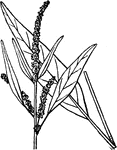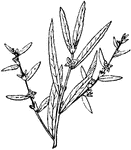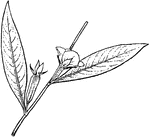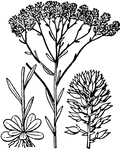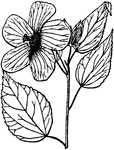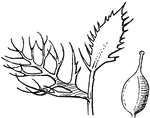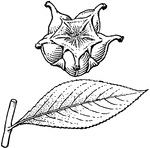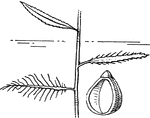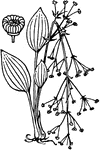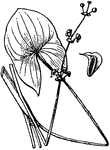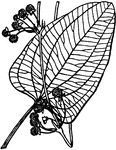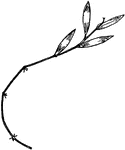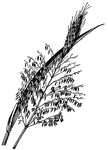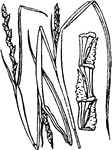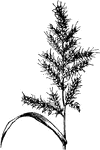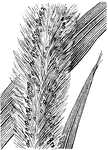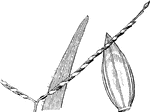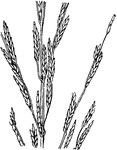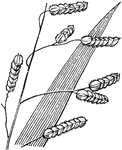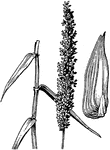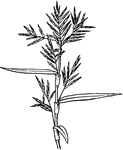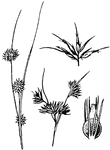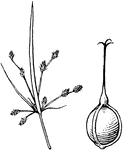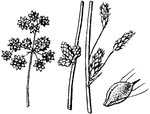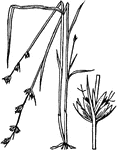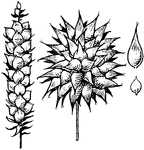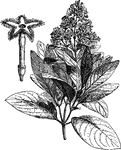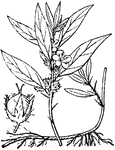
Hydrolea
Sepals united at base into a tube enclosing the ovary and later the fruit; leaves with spines in axils.

Leaf Beetle
"The Popular-tree Golden bug, chrysomela populi, of a blueish-green, has a strong odor, and…

Walking Leaf
"The Phasmina includes some curious insects, one species of which is the Walking-leaf, Phyllium…

Ascidium
"Ascidium of a Plant. Leaf of pitcher-plant (Nepenthes) with a winged petiole and terminating in an…
Tripsacum
Inflourescences not expanded; the lower pistillate portion breaking up into bony, bead-like joints.
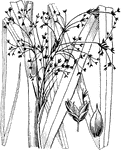
Cladium
Spikelets with the uppermost scale only enclosing an achene; our commonest species has saw-edged. cutting…
Frog Hopper on Leaf
"Frog Hoppers are ranked under the homopterous sub-order of insects. The name of frog hopper refers…
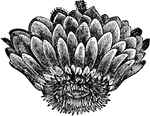
Victoria Regia
"Victoria Regia, named by Lindley after Queen Victoria, is the most magnificent of all known water lilies,…
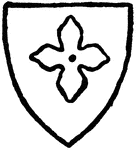
Quatrefoil
"The Quatrefoil is a piercing or panel divided by cusps or foliations into four leaves, or more correctly…
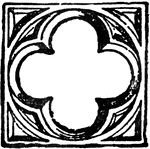
Quatrefoil
"The quatrefoil is four-leaved grass; a frequent bearing in coat-armor."—(Charles Leonard-Stuart,…
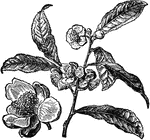
Tea Plant
"Tea is the dried leaf of an evergreen shrub of the natural order Ternstœmiaceæ. It includes the China…
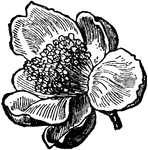
Tea Flower
"Tea is the dried leaf of an evergreen shrub of the natural order Ternstœmiaceæ. It includes…

Tea Fruit
"Tea is the dried leaf of an evergreen shrub of the natural order Ternstœmiaceæ. It includes…

Speculum
"Speculum, a mirror, a looking-glass. The looking-glasses of the ancients were usually made of metal,…

Head of a thyrsus
"Shows the head of a thyrsus composed of the leaves and berries of the ivy, and surrounded by acanthus…

